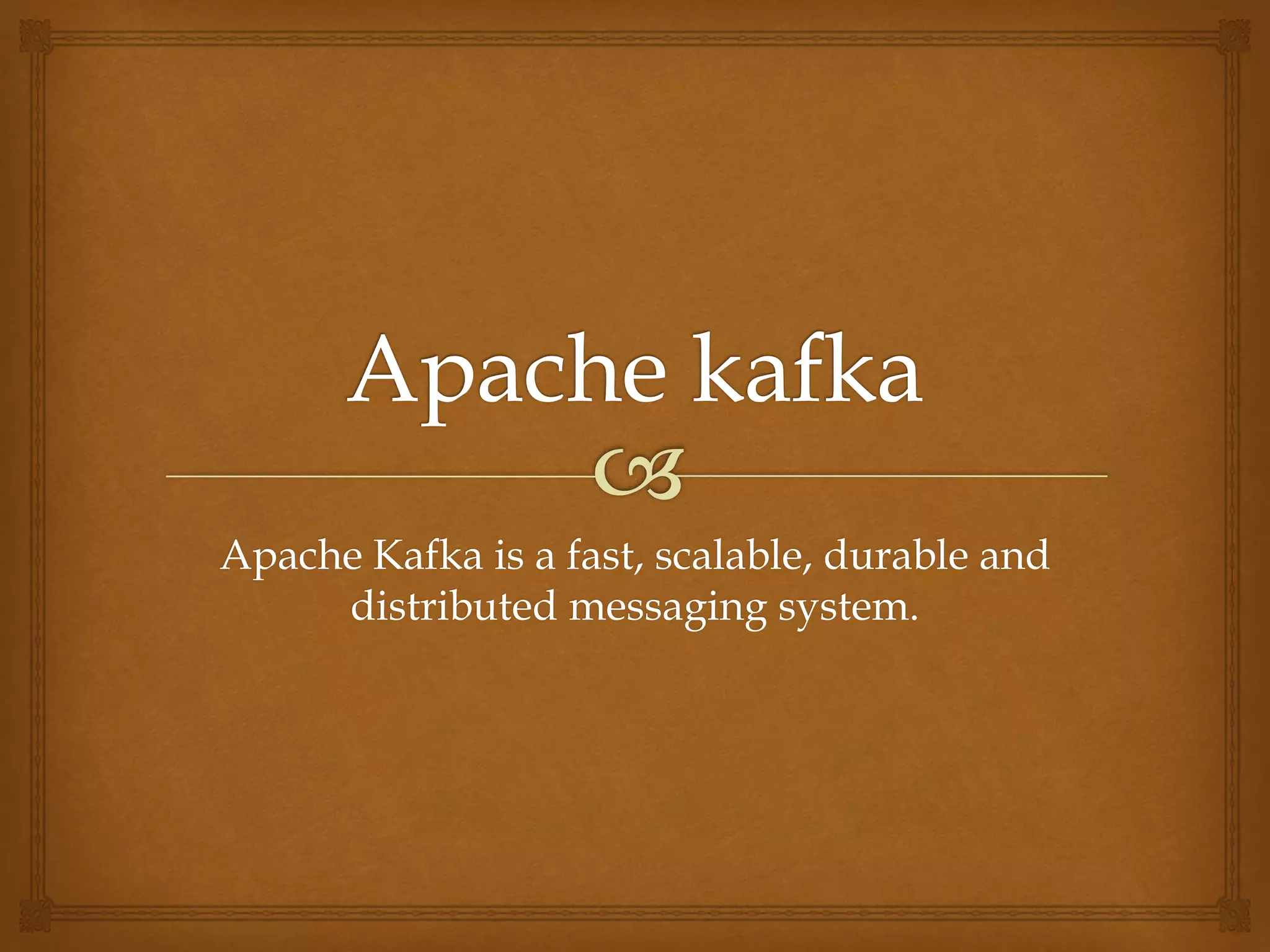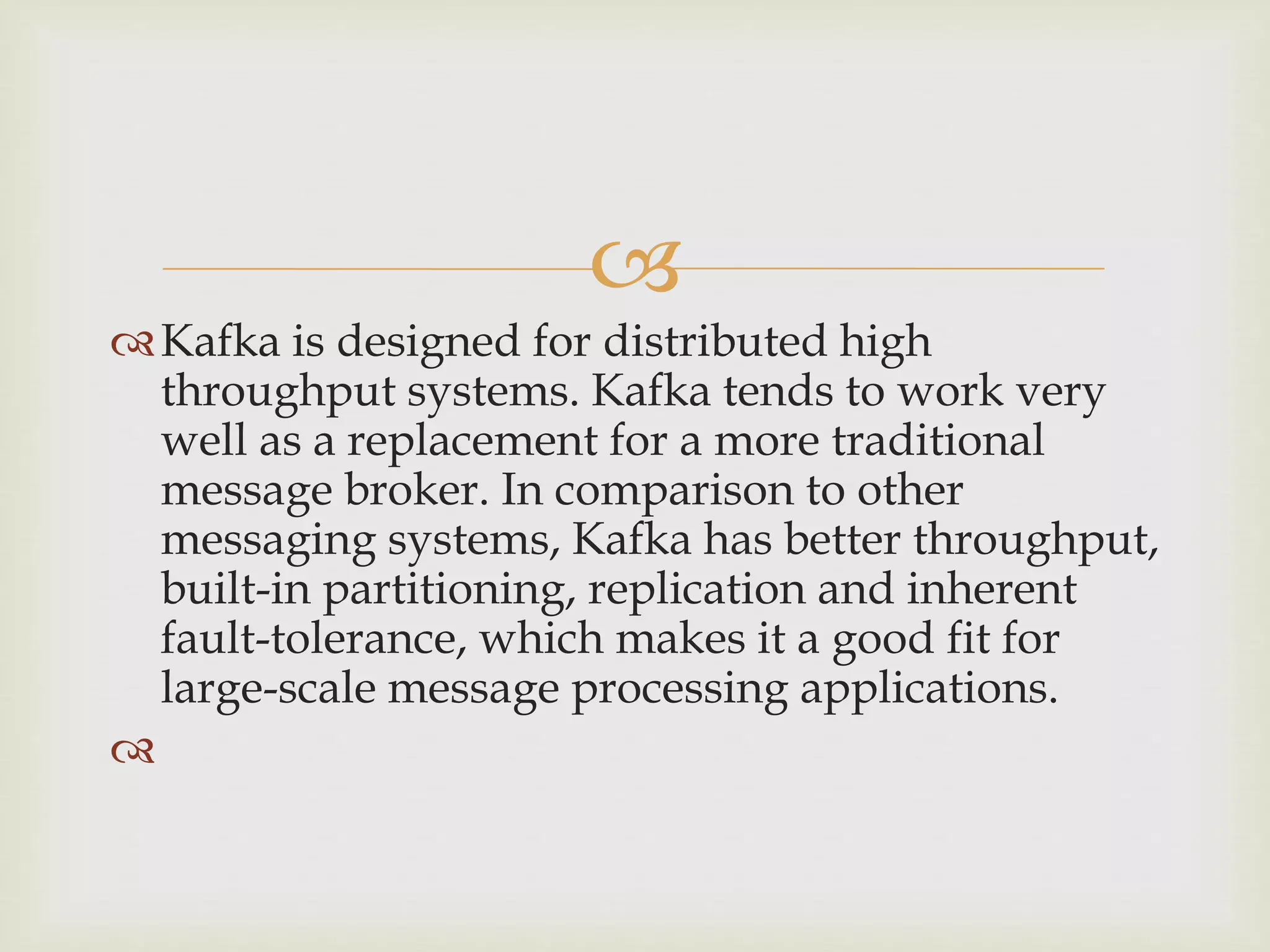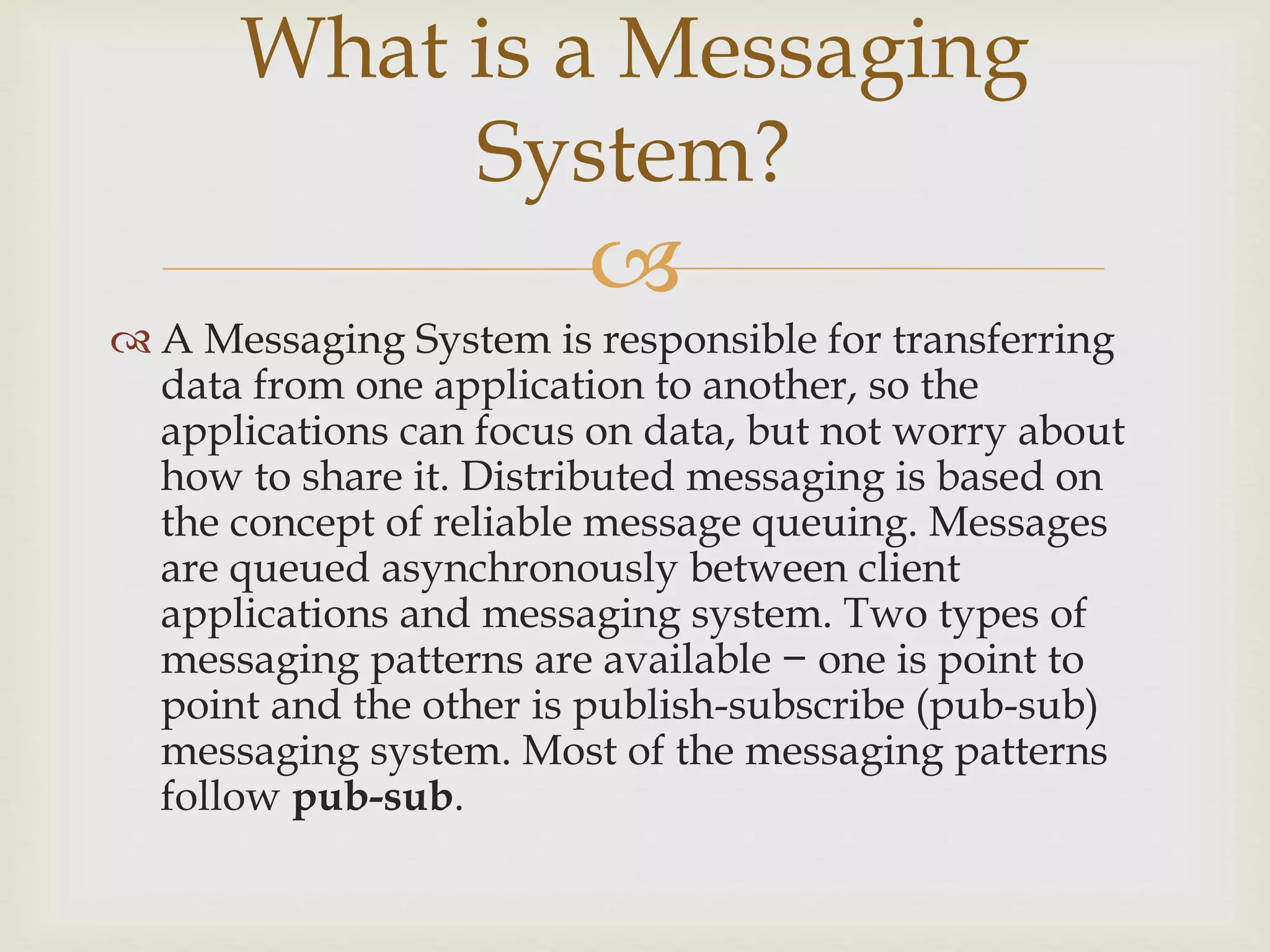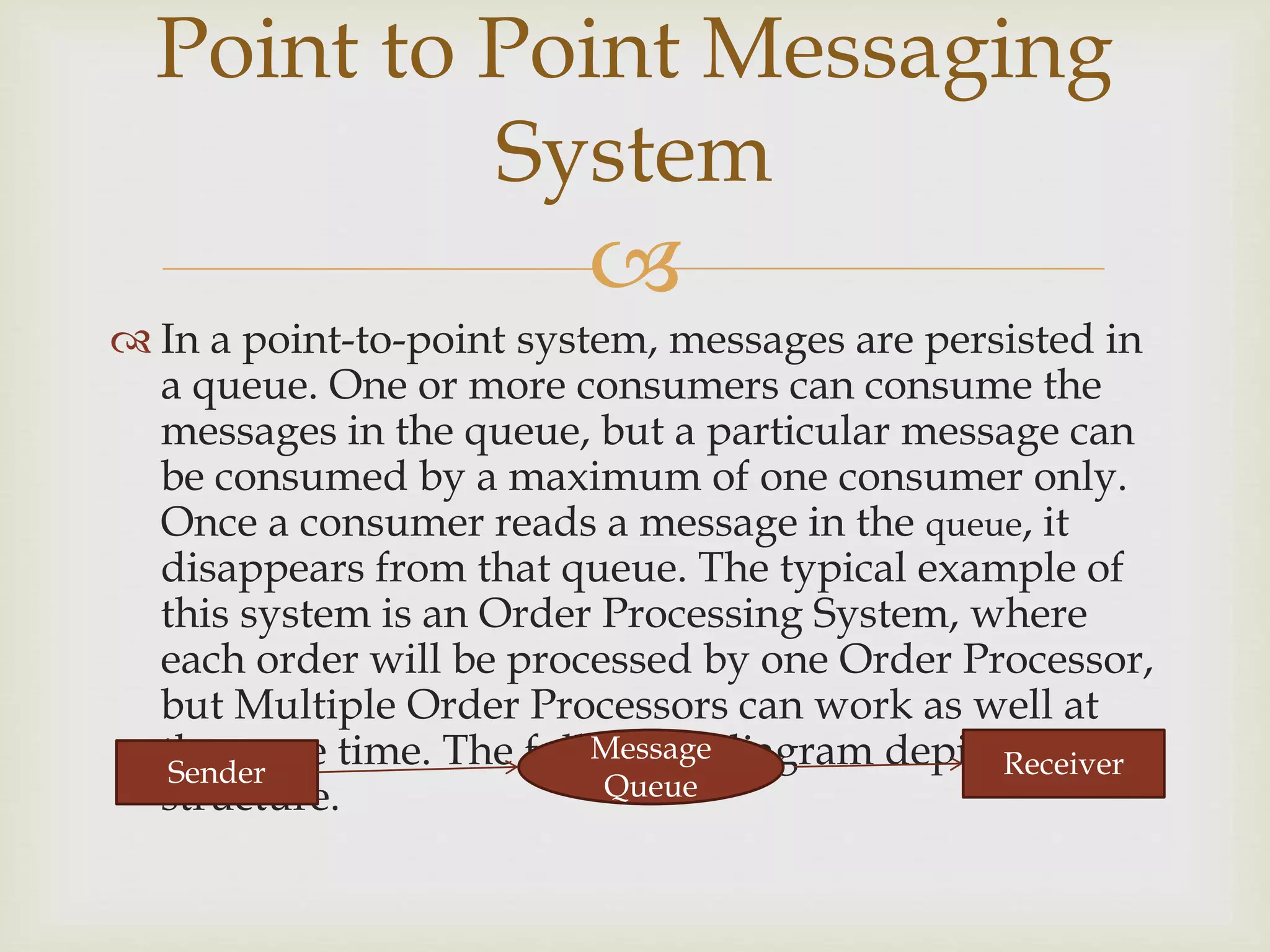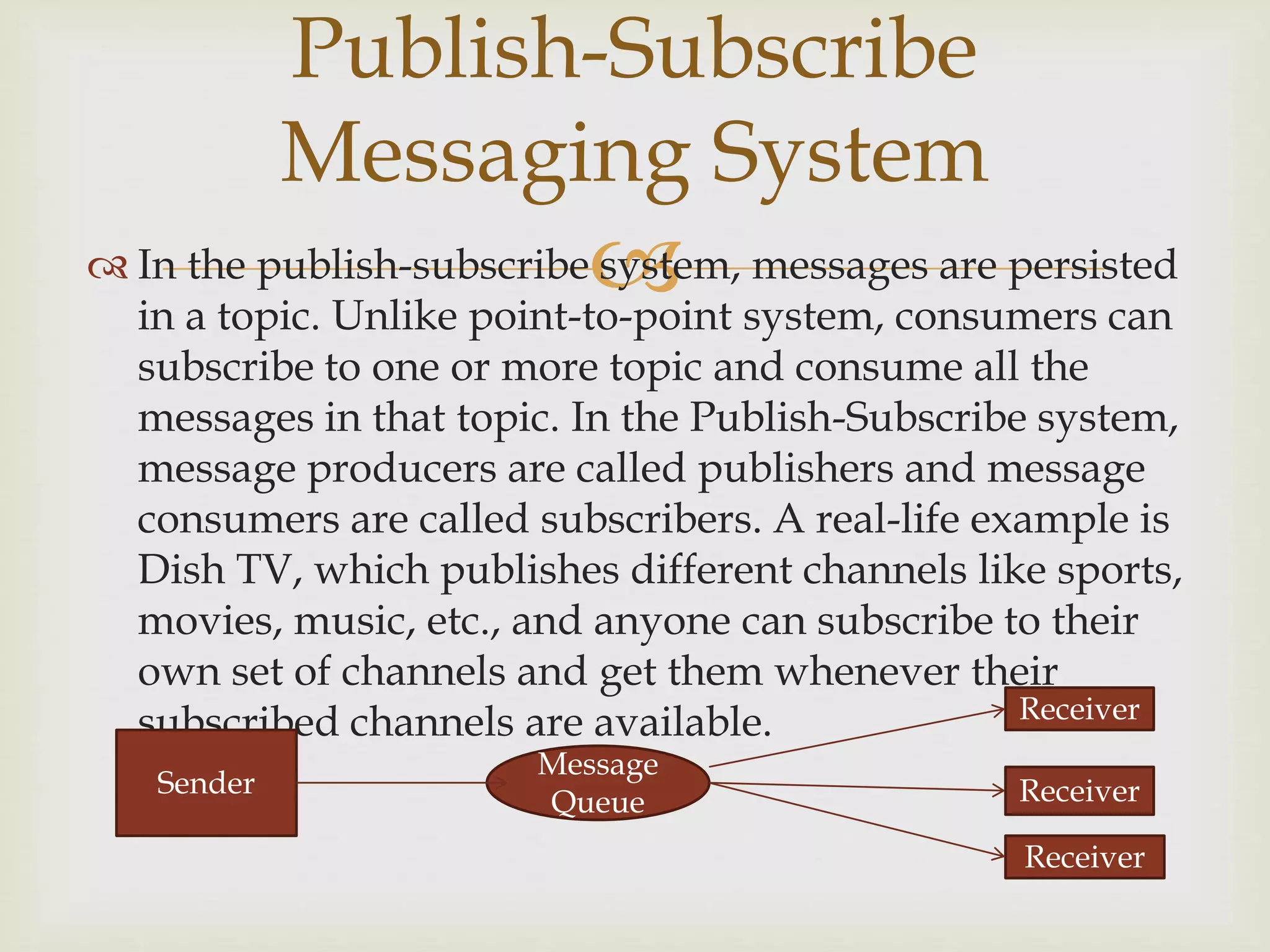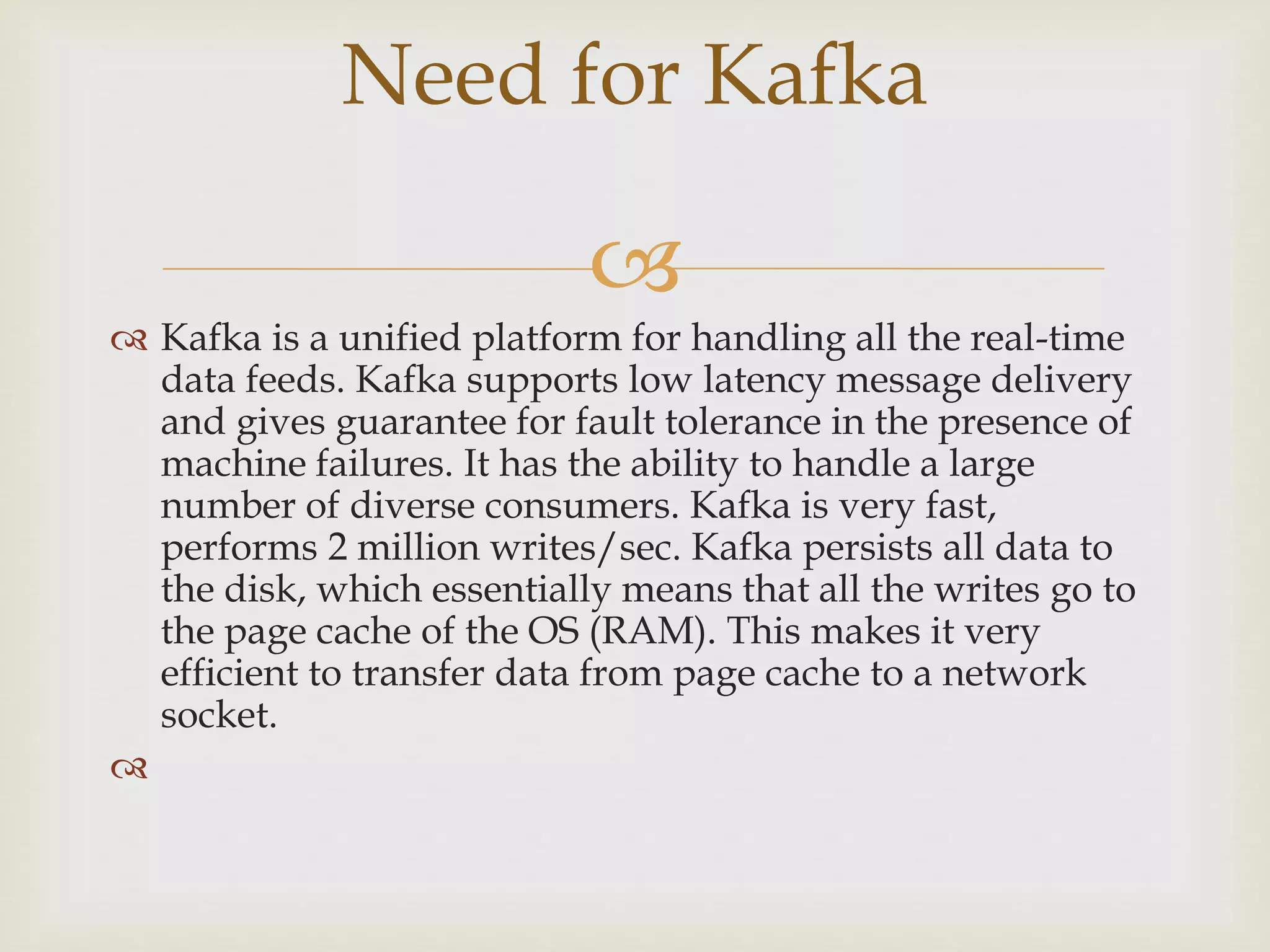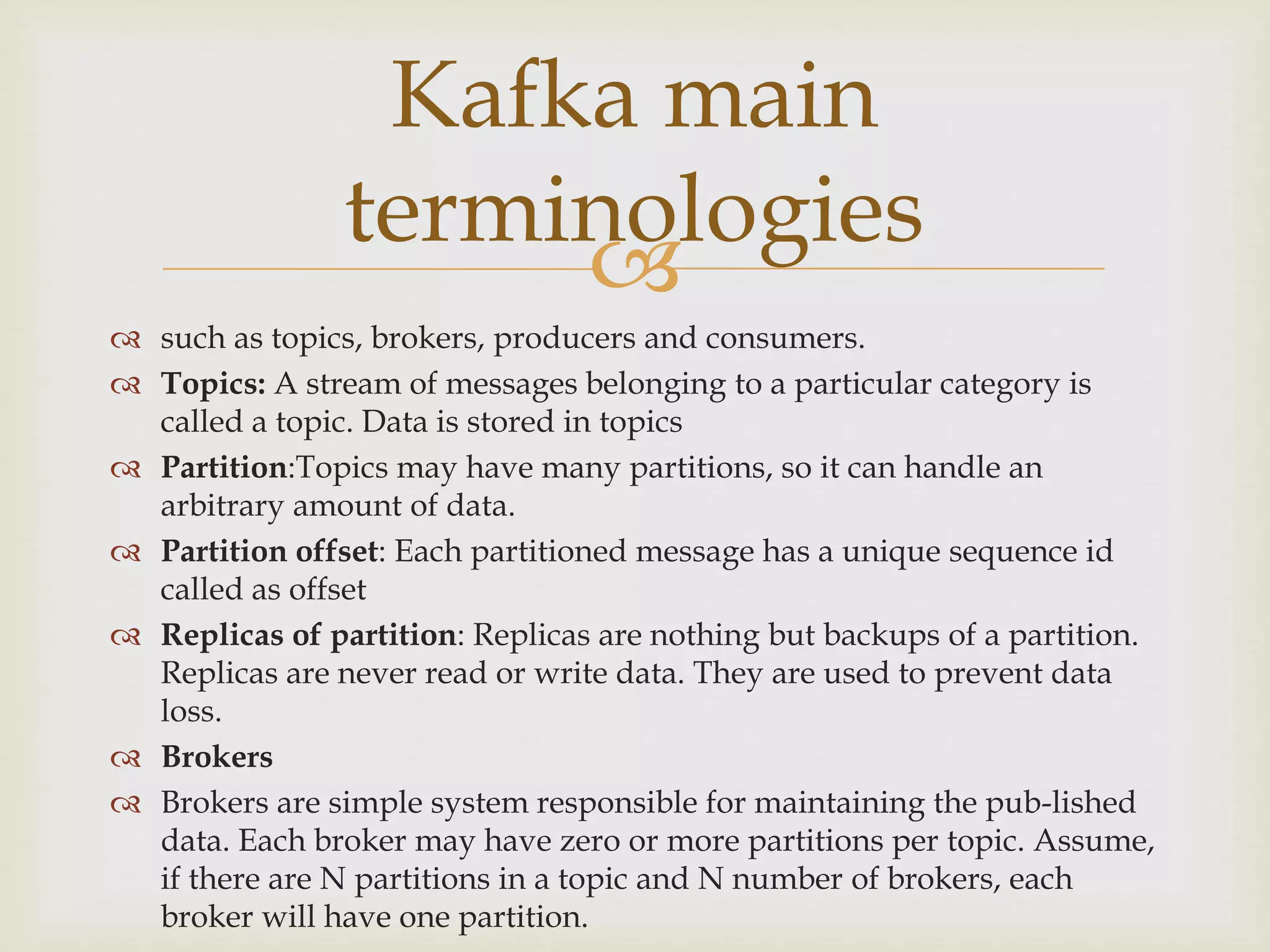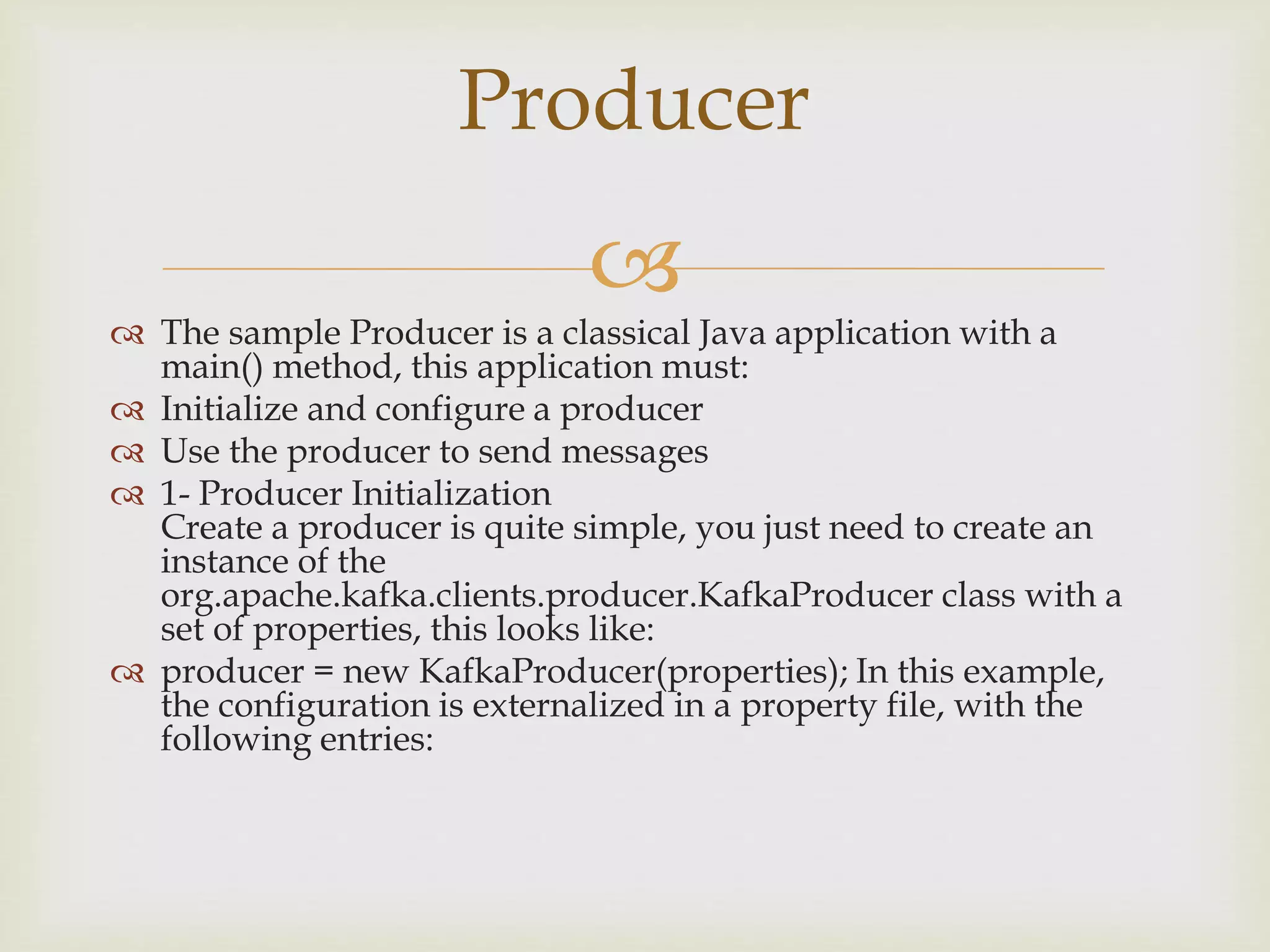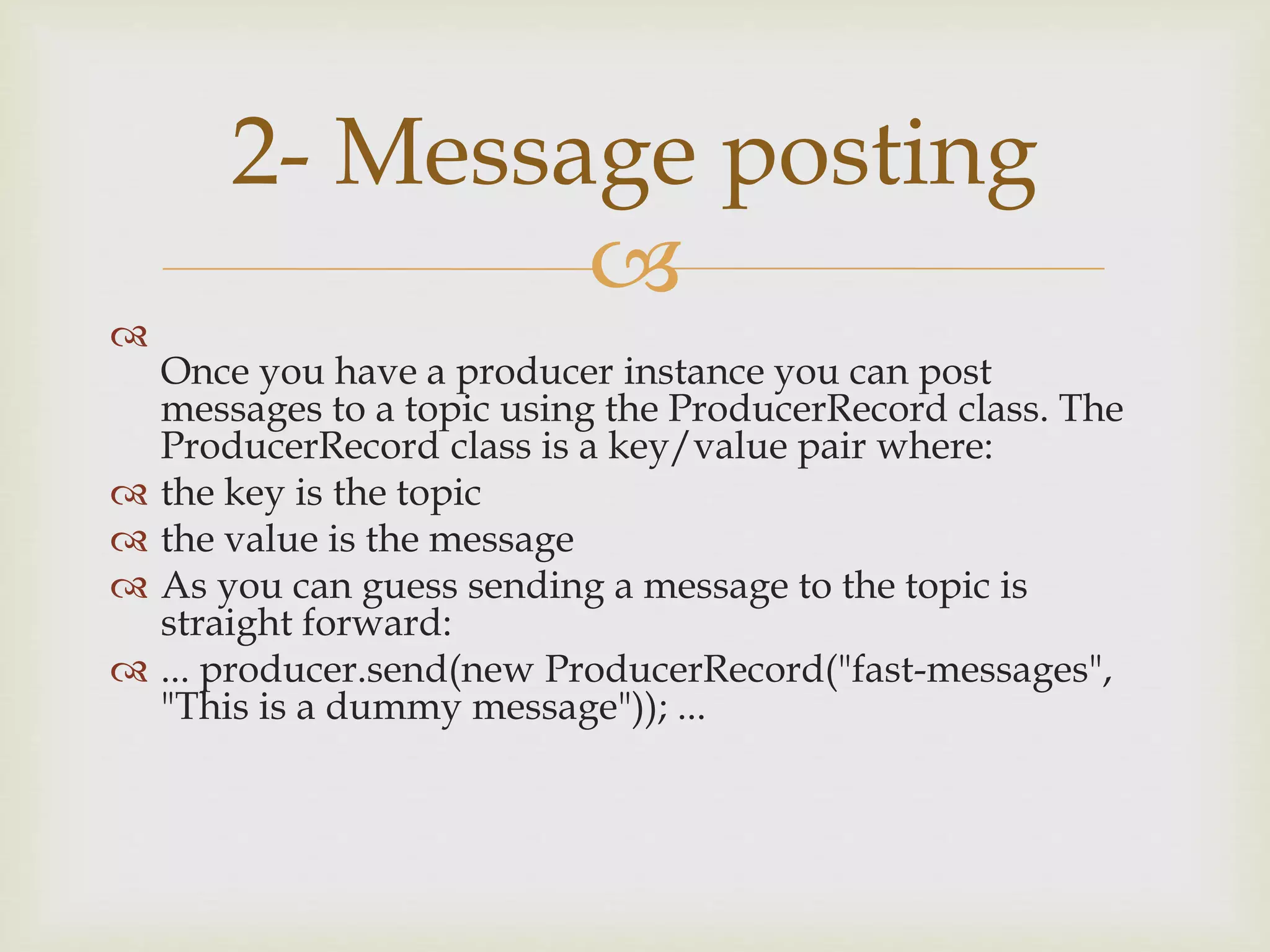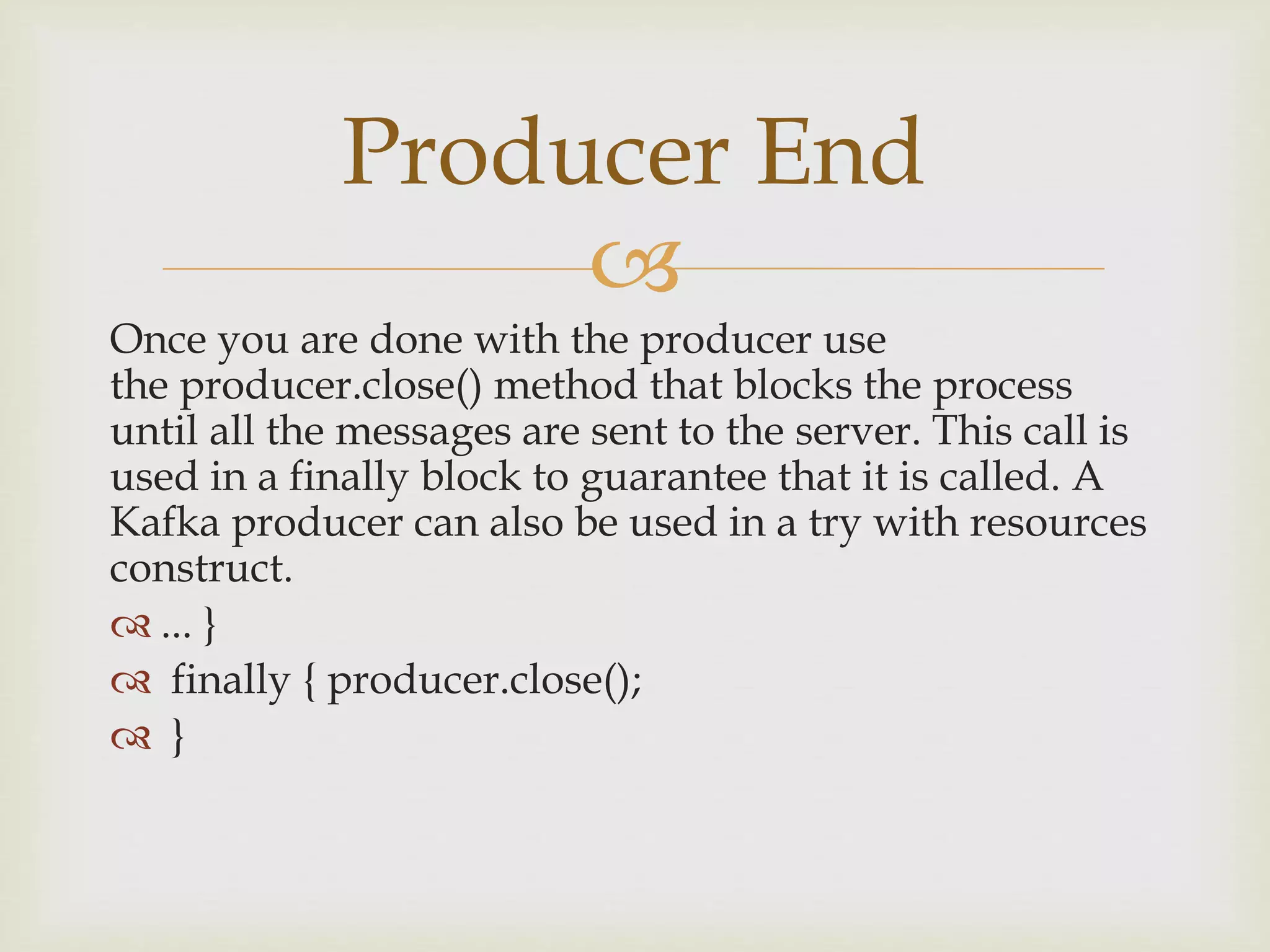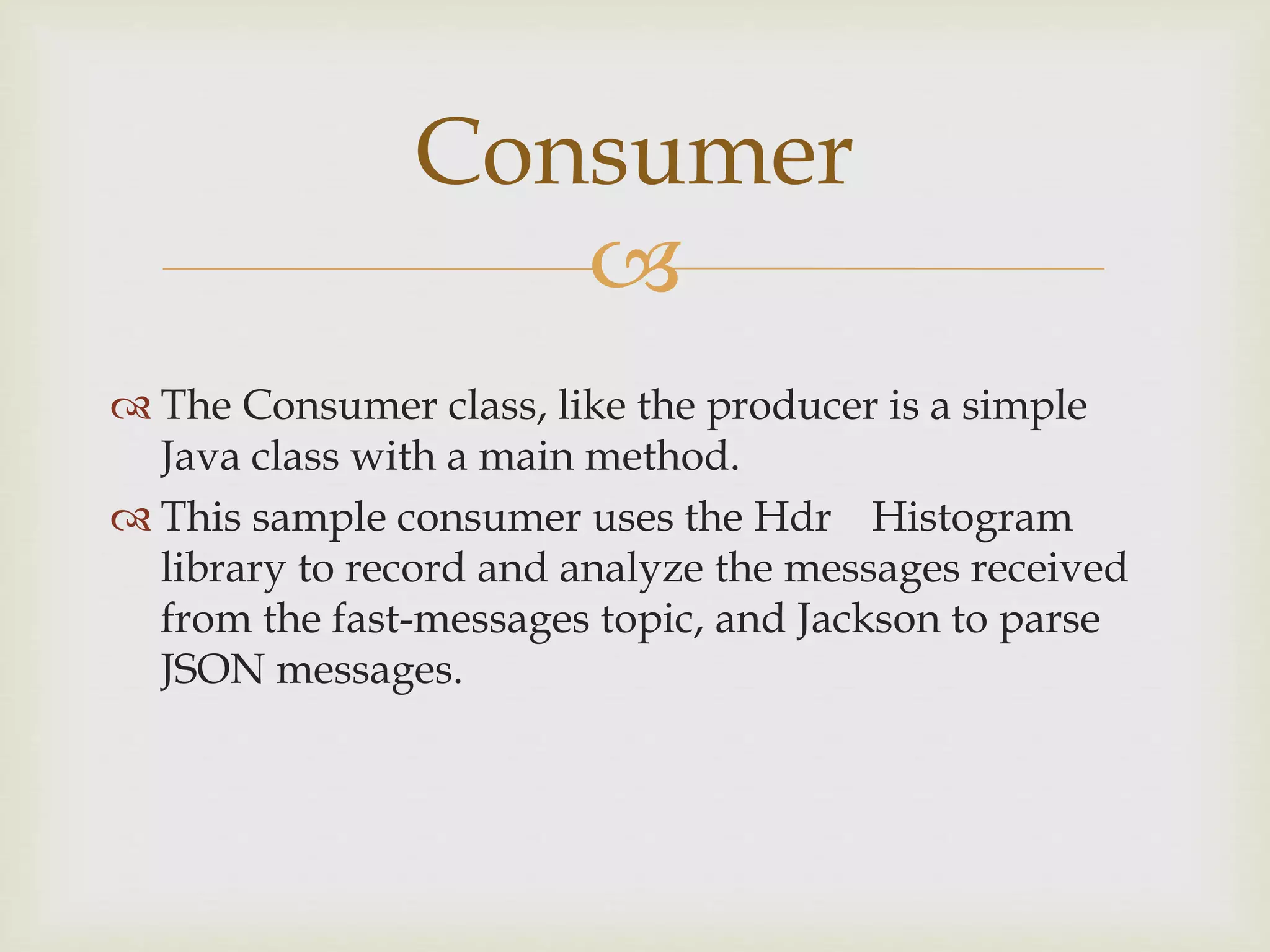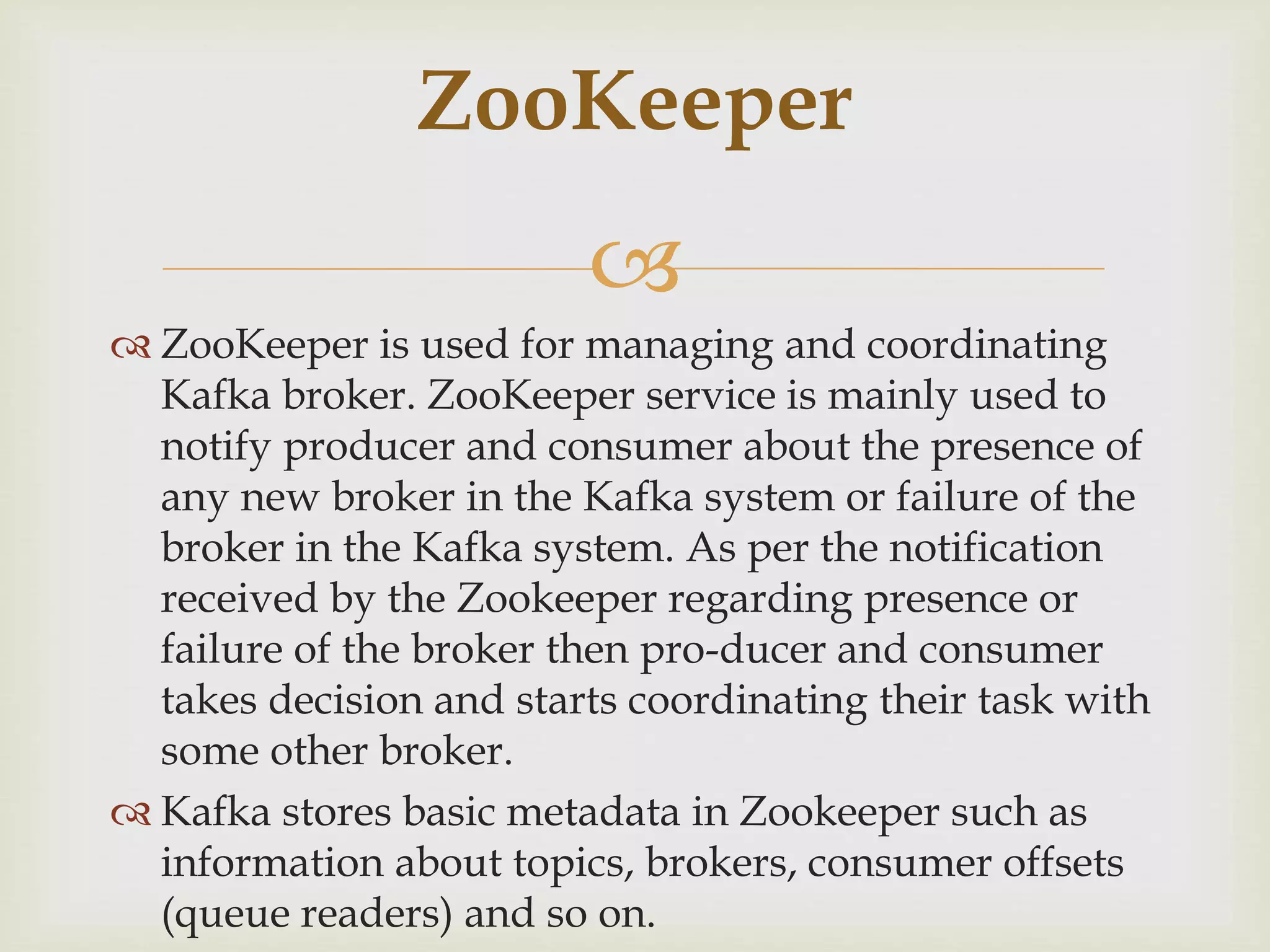Apache Kafka is a fast, scalable, and distributed messaging system. It is designed for high throughput systems and can replace traditional message brokers due to its better throughput, built-in partitioning for scalability, replication for fault tolerance, and ability to handle large message processing applications. Kafka uses topics to organize streams of messages, partitions to distribute data, and replicas to provide redundancy and prevent data loss. It supports reliable messaging patterns including point-to-point and publish-subscribe.
